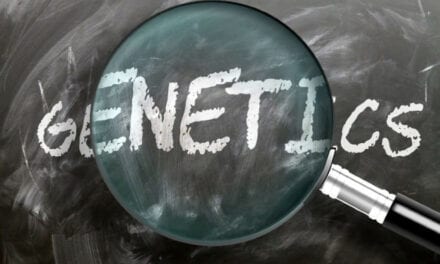In 10% of affected individuals there is a strong genetic component, which causes the disease to occur in several members of a single family. In about half of these cases of familial ALS, the origin lies in a gene called C9ORF72. But why do mutations in this gene kill motor neurons? The Genomic Instability Group may have found the answer, which they explain in The EMBO Journal.
The Genomic Instability Group, headed by Óscar Fernández-Capetillo at the Spanish National Cancer Research Centre (CNIO), discovered a mechanism that explains the toxicity derived from mutations in C9ORF72. The novel mechanism links these mutations to a general problem that blocks all nucleic acids, DNA and RNA, and thus disrupts a multitude of processes that are fundamental to the functioning of cells.
Too Much Arginine
Mutations in the C9ORF72 gene are toxic, the CNIO researchers reveal, because they induce the cell to produce small proteins or peptides that are very rich in arginine, an amino acid that, due to its positive charge and chemical nature, binds very avidly to nucleic acids, DNA and RNA.
The CNIO study indicates that, by binding to nucleic acids with such high affinity, these arginine-rich proteins displace all cellular proteins that interact with DNA and RNA in a widespread manner, thus blocking any cellular reaction that involves DNA or RNA. And as a result, with its nucleic acids effectively blocked, the cell dies.
DNA contains the instructions for the cell to make the proteins it needs for proper function. Hundreds of proteins need to anchor themselves to the DNA and RNA to read their instructions and eventually make new components for the cell. But “the presence of arginine-rich peptides hampers any reaction involving nucleic acids,” the authors add, in a media release from Centro Nacional de Investigaciones Oncológicas (CNIO).
“What we have seen is that arginine-containing peptides are like a kind of tar that sticks to nucleic acids and decorates them, and in doing so they displace the proteins that are normally bound to the nucleic acids so that nothing that involves DNA or RNA works.”
— Óscar Fernández-Capetillo
Cellular Effects of Protamine
This initial hypothesis was supported when the group decided to test whether similar problems were also seen when cells would be exposed to a natural protein that has a lot of arginines. There is such a protein, but it is expressed only transiently during the development of sperm cells: protamine.
Consistent with the model now published in The EMBO Journal, the biological function of protamine is to displace histones from the DNA; histones are proteins that facilitate DNA compaction. “By exchanging histones for protamine, which is smaller, sperm DNA can become more compact,” explains Fernández-Capetillo.
However, protamine is toxic to any cell that is not a sperm cell. “We think that what happens in ALS patients is equivalent to what would happen if their motor neurons accidentally started to produce protamine.”
Indeed, the paper in The EMBO Journal shows that the cellular effects of protamine are identical to those of the arginine-rich peptides found in ALS patients.
How to Overcome Toxicity
Research to find ways to overcome this toxicity has already begun in the group. As has the work to create animal models in which the problem – the production of toxic peptides – is reproduced, to provide a platform for testing potential therapies.
Learning how to alleviate the toxicity of these peptides may also be useful in addressing non-C9ORF72-associated ALS. The researchers believe that the widespread mechanism of nucleic acid blocking is probably what happens in ALS in general.
“The vast majority of mutations found in ALS patients are in proteins that bind RNA, and what these mutations generally do is prevent the binding of these proteins to RNA. Moreover, the cells of these patients also have very general problems with their nucleic acids.
“That is why we believe that, although mutations in C9ORF72 only affect a fraction of ALS patients, the mechanism underlying the toxicity of neurons may not be fundamentally different from what happens in the rest of ALS patients. Trying to show whether this is the case is something we are working on now.”
— Vanesa Lafarga
[Source(s): Centro Nacional de Investigaciones Oncológicas (CNIO), EurekAlert]
Related Content:
Could This Explain the ALS Mystery?
ALS Symptoms’ Impact on ADLs
Scientists ID Compound They Hope Could Reverse ALS Damage





